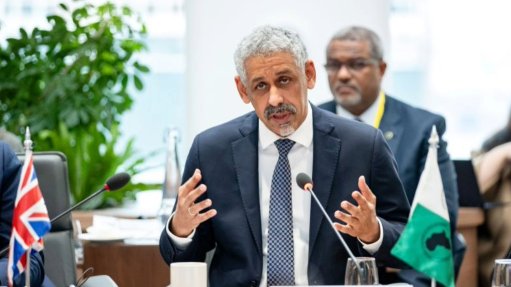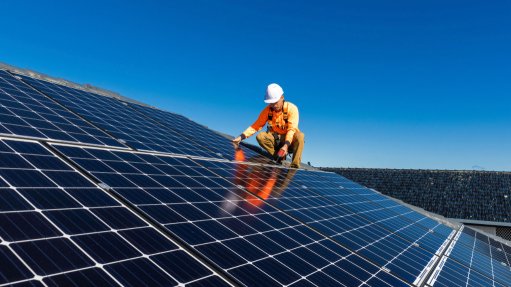Climate finance must be a mainstream economic issue
If climate change is a risk to economies, then it has to be placed in the mainstream of economic thinking, rather than on the periphery. However, economic debates are starting to move in the direction of mainstreaming climate change issues as part of broader economic policy, compared with what was the case, say, about 15 years ago.
But more needs to be done, and there are promising signs of this happening. New International Monetary Fund (IMF) MD Kristalina Georgieva, for example, has now made climate change a central issue for the institution. The IMF is beginning to think of ways of embedding climate concerns as a risk measure in macroeconomics. It seeks to do this as part of country analyses in its Article IV reviews.
Even though the tone is moving in the right direction, the divide in economic policymaking and implementation continues.
The primary driver of the burgeoning change is the recognition that climate effects add to costs where nothing is done to address them but can be a boost to economic growth where something is done.
The systemic nature of climate change is slowly being felt across the globe. In 2017, 90% of claims for disaster insurance were related to extreme weather events. The cost of insurance for extreme weather events that year was estimated at $133-billion to $300-billion – depending on the reports one reads. Yearly costs of adaptation around the globe are believed to be $140-billion to $300-billion.
The resources required to address the climate change challenge will not be enough if they are sourced through normal overseas development assistance (ODA) only. Already 20% to 25% of climate contributions are counted as official ODA when they should have been additional. This at least was the intention with the Roadmap $100-billion that was to have mobilised private and public funds for the Green Climate Fund (GCF). The GCF is now looking at its next round of replenishment and it is doubtful that the target will be met. Nonetheless, it is clear we need additional sources of funding to support global efforts to deal with climate change mitigation and adaptation.
The nationally determined contributions (NDCs) provide a useful indication of what the needs of countries are from the adaptation and mitigation points of view. One can get a sense of domestic commitments and abilities, as these are bottom-up and voluntary pledges – in other words, how much of NDC requirements can be financed from domestic resources and how much of the commitments are conditional on external support. For the majority of the least-developed countries, additional commitments will require external support.
Nonetheless, NDCs should be related to economic capability. This means the NDCs have to pass a macroeconomic stress test to ascertain how much of the proposed commitments in the NDCs can be met through sound macroeconomic policy, supported by strong fiscal allocations and mobilisation of private capital.
Macroeconomic concerns relate to inflation, currency volatility, debt-to-gross- domestic-product ratios, credit ratings and other factors that influence the pace at which the State can be the preferred procurer of significant new infrastructure, especially public infrastructure. This is more germane to emerging, middle-income and developing economies. Even in the case of South Africa, which has substantial resources and a sound tax collecting authority, it is only government guarantees and policy certainty that enabled the cost of independent power producers to decline with successive bid rounds.
ODA is insufficient to deal with the twin challenges of mitigation and adaptation. We have to look at other ways of meeting the finance shortage and seek innovative ways of raising finances for climate change at global level. There are already several proposals that seek to deal with pre-emptive and reactive effects of climate change.
A special trade or finance levy has been proposed for a long time, and this could be a one-off or longer-duration levy on global capital flows and financial transactions. This could be a type of finance levy similar to a Tobin tax.
Carbon pricing is in place in 70 countries but the levels are too low to be effective in signalling the need for dramatic change. Carbon pricing is the most effective mechanism administratively to implement, but needs to be much higher. The New Climate Economic Report of 2018 points out that subsidy reform and carbon pricing alone could generate $2.8-trillion, which could be used to fund climate action, especially the decarbonisation of the electricity sector.
Preventing tax avoidance and strengthening tax collection are both global and national measures that can be taken and, already, measures are being put in place through the work of the Organisation for Economic Cooperation and Development’s Base Erosion and Profit Shifting initiative and the International Commission for the Reform of Corporate Taxation that could improve fiscal space.
Globally, there is a need for greater mission-orientated research in supporting cutting-edge technological breakthroughs in scaling mitigation efforts and increasing resilience in cities and key commodity sectors. Advanced economies can generate scale effects to the benefit of the rest of the world on the basis of their market size and higher incomes. Lowering the overall costs of these technologies makes it easier for poorer or emerging economies to adopt these technologies without an economic cost premium.
As suggested by Richard Samanshese, these efforts can be further aided by a special plurilateral trade initiative between the major economies that uses trade mechanisms and tools to facilitate a low-carbon trade agreement. Such an agreement can enhance and scale the demand for low-carbon goods and services “by embedding and aligning price advantages for them through linked trade, procurement, tax and investment rules”.
Mobilisation of resources has to come from unconventional sources. The political economy of finance and tax has to shift.
Article Enquiry
Email Article
Save Article
Feedback
To advertise email advertising@creamermedia.co.za or click here
Comments
Announcements
What's On
Subscribe to improve your user experience...
Option 1 (equivalent of R125 a month):
Receive a weekly copy of Creamer Media's Engineering News & Mining Weekly magazine
(print copy for those in South Africa and e-magazine for those outside of South Africa)
Receive daily email newsletters
Access to full search results
Access archive of magazine back copies
Access to Projects in Progress
Access to ONE Research Report of your choice in PDF format
Option 2 (equivalent of R375 a month):
All benefits from Option 1
PLUS
Access to Creamer Media's Research Channel Africa for ALL Research Reports, in PDF format, on various industrial and mining sectors
including Electricity; Water; Energy Transition; Hydrogen; Roads, Rail and Ports; Coal; Gold; Platinum; Battery Metals; etc.
Already a subscriber?
Forgotten your password?
Receive weekly copy of Creamer Media's Engineering News & Mining Weekly magazine (print copy for those in South Africa and e-magazine for those outside of South Africa)
➕
Recieve daily email newsletters
➕
Access to full search results
➕
Access archive of magazine back copies
➕
Access to Projects in Progress
➕
Access to ONE Research Report of your choice in PDF format
RESEARCH CHANNEL AFRICA
R4500 (equivalent of R375 a month)
SUBSCRIBEAll benefits from Option 1
➕
Access to Creamer Media's Research Channel Africa for ALL Research Reports on various industrial and mining sectors, in PDF format, including on:
Electricity
➕
Water
➕
Energy Transition
➕
Hydrogen
➕
Roads, Rail and Ports
➕
Coal
➕
Gold
➕
Platinum
➕
Battery Metals
➕
etc.
Receive all benefits from Option 1 or Option 2 delivered to numerous people at your company
➕
Multiple User names and Passwords for simultaneous log-ins
➕
Intranet integration access to all in your organisation


















